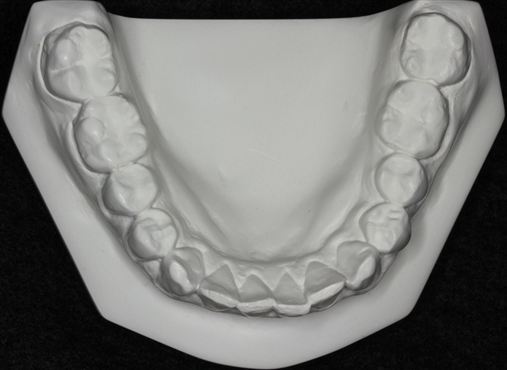Orthodontic Science and Practice Volume 5 – Número 19 – Ano 2012 Tópico Especial Página 275-282 Diagrama ortodôntico individualizado Trevisi Trevisi individualized orthodontic arch form diagram Hugo José Trevisi Renata Chicarelli Trevisi Resumo As pesquisas sobre formas de arcos vêm demonstrando, desde o início do século 20, que um dos fatores para manter a estabilidade pós-tratamento ortodôntico é não alterar consideravelmente a forma do arco mandibular do paciente, a distância intercaninos e a distância intermolares. A proposta dessa investigação foi idealizar uma forma de arco ortodôntica ideal ao paciente, observando a forma original, analisando a necessidade ou não de fazer algumas modificações, considerando a forma, o diâmetro anterior e o diâmetro posterior do arco mandibular. A recomendação é manter a forma do arco, caso este não apresente alterações significativas. A metodologia proposta é prática, sobrepondo os templates sobre o modelo de gesso inferior do paciente na região anterior pela vestibular de canino a canino e na região de molares no terço cervical, exatamente no sulco gengival. Uma vez selecionada a forma apropriada do arco ortodôntico ao paciente, confeccionar os arcos de aço sobre o diagrama apropriado que serão utilizados no final do alinhamento, na fase da biomecânica (fechamento de espaços) e na fase de detalhe e acabamento. Descritores: Estabilidade, templates, diagrama, oclusão. Abstract Research on arch form since the early 20th century has shown that a successful stability after orthodontic treatment can be achieved if the orthodontist refrains from significantly altering the patient’s mandibular arch form, intercanine width and intermolar width. Thus, this research aimed to devise an ideal archwire form for the patient about to undergo orthodontic treatment. An archwire form that could prove ideal for the patient based on his/her original dental arch form, while determining whether or not changes are required in light of the form, anterior diameter and posterior diameter of the mandibular dental arch. The author’s recommendation is that the patient’s original dental arch form be preserved, unless it has undergone significant changes. The proposed methodology is straightforward. It consists in superimposing the templates buccally over the patient’s mandibular cast, from canine to canine, and in the molar region in the cervical third, precisely on the gingival sulcus.Once an arch form suitable to the patient has been found, the orthodontist can then proceed to produce – guided by the appropriate template – the steel archwires that will be used at the end of the alignment phase, in the biomechanics phase (space closure) and in the detailing and finishing phase. Descriptors: Stability, templates, diagram, occlusion.
Este contenido está restringido a los miembros del sitio. Si eres un usuario existente, por favor, accede. Los nuevos usuarios pueden registrarse a continuación.




